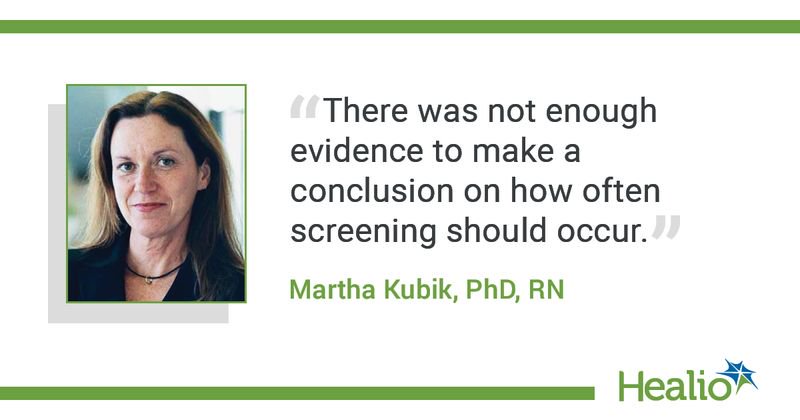USPSTF: Screen all sexually active women, but not men, for chlamydia, gonorrhea
The U.S. Preventive Services Task Force issued a draft recommendation encouraging physicians to screen for chlamydia and gonorrhea in all sexually active women aged 24 years and younger.
The USPSTF also recommended screening sexually active women aged 25 years and older who are at increased risk for chlamydia and gonorrhea. The task force stated the evidence was insufficient to decide if men, regardless of age and sexual history, should be screened for these infections.

“Because we know the highest rates of chlamydia and gonorrhea occur in women aged 24 and younger, we recommend they be screened,” Martha Kubik, PhD, RN, task force member and director of the School of Nursing at the College of Health and Human Services at George Mason University, told Healio Primary Care. “For sexually active women and pregnant persons aged 25 and older, we recommend screening when risk factors are present, such as inconsistent condom use when not in a mutually monogamous relationship, having new or multiple sex partners, or having a previous or current sexually transmitted infection.”
The task force said there are 692.7 cases of chlamydia per 100,000 women in the United States. This is nearly double the rate in men, which is 380.6 cases per 100,000 men, the task force said. However, gonorrhea is more prevalent in men than women — 212.8 cases per 100,000 men vs. 145.8 cases per 100,000 women. Both chlamydia and gonorrhea infections are among the most common STIs in U.S. adults, according to the task force.
“We encourage clinicians to obtain a sexual health history on all their patients, and to ask their patients about sexual behavior in confidential, respectful and culturally appropriate ways,” Kubik said. “There was not enough evidence to make a conclusion on how often screening should occur, but a reasonable approach to screening frequency would be for clinicians to screen any patients whose sexual history reveals new or continued risk factors since their last negative test result.”
According to the USPSTF, other task force recommendations regarding STIs that clinicians may find helpful include those issued for hepatitis B and C viruses, HIV, genital herpes, syphilis and behavioral counseling for all sexually active adolescents and for adults who are at increased risk for STIs.
The new draft recommendation aligns with the USPSTF’s 2014 recommendation in this clinical area, the task force said. The more recent review, unlike its predecessor, combined all populations into one analytic framework; assessed the accuracy of risk stratification and screening strategies for determining who might be at increased risk; and evaluated “diagnostic accuracy on anatomic site-specific testing,” the authors of an accompanying evidence review wrote.
“The task force aims to keep all recommendations current, updating each recommendation regularly,” Kubik added. “The task force prioritizes topics based on several criteria, including the relevance to prevention and primary care, importance of public health, potential impact of the recommendation, and whether there is new evidence that may change a current recommendation.”
The USPSTF will accept comments on its latest draft recommendation until March 29 via its website: www.uspreventiveservicestaskforce.org/tfcomment.htm
References:
Cantor A, et al. Evidence Review. Screening for chlamydial and gonococcal infections: A systematic Review Update for the U.S. Preventive Services Task Force. Accessed March 1, 2021.
Press Release.
